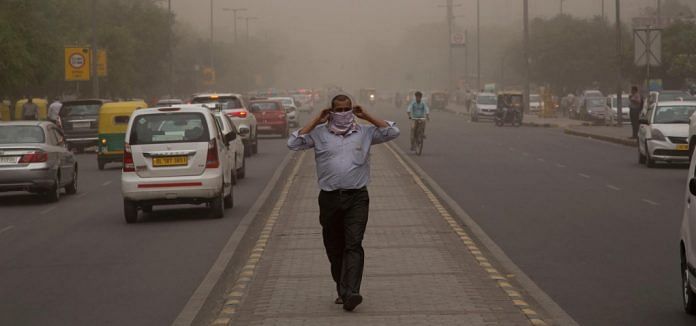Our most accurate models can predict weather only up to five days in advance, with nearly a 90 per cent probability of getting the next 24 hours spot-on.
New Delhi: Contrary to the alarming predictions of intense thunderstorms and dust storms in several parts of India, Tuesday turned out to be calm and sunny in most areas that were expected to be affected.
This begs the question why weather forecasters get it so wrong at times, and why forecasts aren’t valid beyond a couple of days in most places.
Weather forecasts today are made with the help of computer models that have been fed data relating to the current weather as well as historical patterns for the given time of the year.
All this data is dumped into a supercomputer, alongside updates about real-time changes in the weather. The computer then looks at how weather events have shaped up in the past and statistically predicts what the weather will be for the next few hours to the next five days. There can be quite a bit of manual data-tweaking involved in the process as well.
Computers obtain real-time data from satellites, ground observation stations, and weather balloons. The more data points they have, the better their results are expected to be. However, we simply do not have enough eyes in the sky.
Taken on the ground, surface observations measure factors like the shape and size of clouds, their type, wind speed, temperature, and sunlight. Weather satellites orbiting the Earth over 15 times a day continuously send signals to ground stations. Geostationary satellites, which stay above a fixed point on Earth, also monitor the weather 24×7. Satellite weather technology is imperative to keep both road and air traffic on track.
Weather balloons are launched everyday and send back real-time data on pressure, temperature, humidity, wind speed, and more, including information about the layers of atmosphere they rise through before they pop and drop their instruments (About 25 per cent of them are recovered).
They are used to measure changes in the upper atmosphere, which plays a big role in altering weather patterns. Even though we launch almost a thousand balloons up in the air every day, the quantity is still not enough to provide good accuracy.
Weather-prediction models themselves vary between countries and agencies. Some meteorologists choose certain programmes to follow and their results can thus significantly vary or even contradict results from another model for the same area.
Also, numerical prediction models depend on countless parameters like percentage humidity, atmospheric winds, and sunlight. Each and every particle in the air and water obeys the laws of physics, and their movements can be calculated numerically through equations fed into a computer. However, even the minutest of changes can set off not one, but several cascading mechanisms that can cause large-scale changes in weather, thus defeating predictions.
In fact, chaos theory, the ‘science of the unpredictable’, itself came about as an accidental discovery of the massively different results received when an input for a weather-prediction model varied by 1/1000th of a decimal. It led meteorologist Edward Lorenz to ask the now famous question, “Does the flap of a butterfly’s wings in Brazil lead to a tornado in Texas?”
Every tiny bit of uncertainty that simply can’t be removed from a model amplifies changes exponentially in a few hours to days. Our most accurate models can predict weather only up to five days in advance, with nearly a 90 per cent probability of getting the next 24 hours spot-on.
Indeed, the core of weather monitoring and prediction is chaos theory itself, building into our methods an inevitable, immutable precautionary measure of not relying on predictions for more than a few days in advance.



